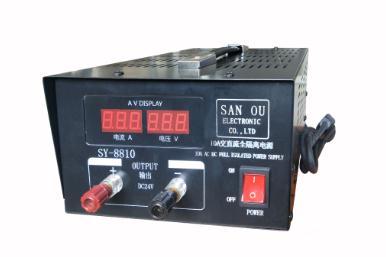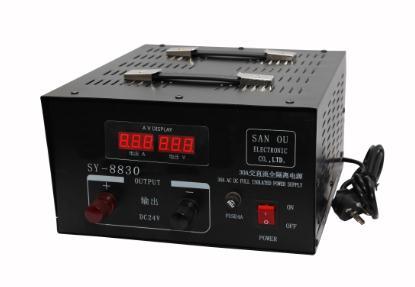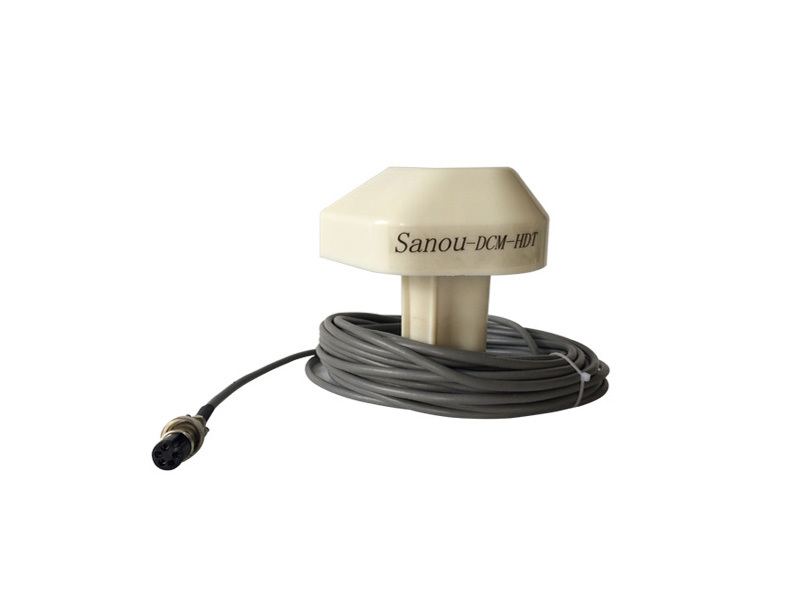News Center
AC/DC AUTO Converter: A Key Component for Your Network Hardware
AC/DC AUTO Converter: A Key Component for Your Network Hardware
Introduction to AC/DC AUTO Converters
In the realm of network hardware, AC/DC AUTO converters serve a **critical function**. These devices are not merely supplementary; they are foundational elements that ensure the smooth operation of various components. **AC/DC AUTO converters** convert alternating current (AC) to direct current (DC) and are vital for devices that require a stable DC voltage. Their importance cannot be overstated, especially as our reliance on technology grows.
Understanding the Basics: What is an AC/DC AUTO Converter?
An AC/DC AUTO converter is a device that transforms AC power from the electrical grid into a usable DC power. This conversion is essential since many electronic devices, including routers, switches, and servers, require DC to operate efficiently.
The Role of Voltage Regulation
One of the crucial features of AC/DC AUTO converters is **voltage regulation**. They maintain consistent output voltage despite fluctuations in input voltage or load conditions. This stability is critical for network devices, which may otherwise suffer from performance issues or even damage.
Key Components of AC/DC AUTO Converters
Understanding the primary components of an AC/DC AUTO converter can provide insight into how these devices function. The main elements include:
- **Transformer**: Steps down the voltage.
- **Rectifier**: Converts AC to DC.
- **Filter**: Smooths the output voltage.
- **Voltage Regulator**: Ensures stable output voltage.
Why AC/DC AUTO Converters are Vital for Network Hardware
AC/DC AUTO converters are indispensable for several reasons:
1. Enhanced Device Compatibility
Different network hardware components have varied power requirements. AC/DC AUTO converters facilitate compatibility among devices that operate on distinct voltage levels. This flexibility allows for more cohesive system integration.
2. Improved Energy Efficiency
AC/DC AUTO converters are designed to optimize energy consumption. By providing only the necessary amount of power, these converters contribute to lower energy costs and reduced environmental impact, making them a smart choice for any network setup.
3. Prevention of Equipment Damage
Electrical surges and fluctuations can damage sensitive network equipment. AC/DC AUTO converters protect devices from these issues by regulating voltage and ensuring that only the appropriate current reaches each component.
4. Supporting Advanced Technologies
As technology evolves, network hardware is becoming increasingly sophisticated. AC/DC AUTO converters are essential for powering advanced technologies such as **IoT devices** and **cloud computing systems**, which often require specialized power solutions.
Types of AC/DC AUTO Converters
Different types of AC/DC AUTO converters are designed for various applications. Understanding these types can help in selecting the right converter for your specific needs.
1. Linear AC/DC Converters
Linear converters are known for their simplicity and reliability. They provide a steady output voltage but may be less efficient compared to switching converters. They are often used in low-power applications.
2. Switching AC/DC Converters
Switching converters are more efficient and are suitable for high-power applications. They use high-frequency switching to convert power, which allows for smaller and lighter designs. They are widely used in modern network hardware.
3. Plug-in AC/DC Adapters
Plug-in adapters are commonly used for external power supply needs. They convert AC from wall outlets into DC for devices like laptops and routers. Their portability and ease of use make them popular in various settings.
Choosing the Right AC/DC AUTO Converter for Your Network
Selecting the appropriate AC/DC AUTO converter involves several considerations:
1. Power Requirements
Assess the power needs of your network hardware. Ensure the converter can provide the necessary voltage and current ratings for optimal performance.
2. Efficiency Ratings
Look for converters with high efficiency ratings. This will ensure that they waste minimal energy, contributing to cost savings over time.
3. Size and Form Factor
Consider the physical size and design of the converter, especially in space-constrained environments. Some converters are designed for compact spaces, while others may be bulkier.
4. Reliability and Manufacturer Reputation
Choose converters from reputable manufacturers known for quality and reliability. Investing in a trusted brand can save costs related to frequent replacements or repairs.
Installation and Maintenance Tips for AC/DC AUTO Converters
Proper installation and maintenance of AC/DC AUTO converters can enhance their longevity and performance.
1. Follow Manufacturer Guidelines
Always adhere to the installation guidelines provided by the manufacturer. This will ensure the safe and effective operation of the unit.
2. Regular Inspections
Conduct regular inspections to check for signs of wear or damage. This is essential for early detection of potential issues that could compromise network performance.
3. Clean the Environment
Dust and debris can adversely affect the performance of AC/DC AUTO converters. Ensure that installation areas are kept clean and clear for optimal air circulation.
4. Monitor Performance
Utilize monitoring tools to assess the performance of your converters. Keeping track of power output and fluctuations can provide valuable insights into potential problems.
Future Trends in AC/DC AUTO Conversion Technology
As technology advances, the AC/DC AUTO conversion landscape is evolving. Here are some trends to watch for:
1. Integration with Renewable Energy Sources
The increasing reliance on renewable energy solutions is pushing the development of AC/DC converters that efficiently work with solar panels and wind turbines.
2. Smart Technology Integration
With the rise of **smart grids** and **IoT**, AC/DC AUTO converters will need to adapt to power a wider range of devices and systems.
3. Miniaturization of Components
There is a continuous trend toward smaller, more efficient components. Expect to see AC/DC converters becoming more compact without sacrificing performance.
FAQs About AC/DC AUTO Converters
1. What is the difference between AC and DC power?
AC (Alternating Current) power changes direction periodically, while DC (Direct Current) power flows in one direction. Most network devices require DC power to function.
2. How do I determine the wattage my AC/DC converter needs to support?
To determine wattage, add up the power requirements of all devices that will be connected to the converter. It’s advisable to choose a converter with a higher wattage rating to ensure safe operation.
3. Can I use any AC/DC converter for my network hardware?
No, it's crucial to match the voltage and current specifications of the converter with those required by your network hardware. Using an incompatible converter can damage your devices.
4. How can I improve the efficiency of my AC/DC converter?
Ensure that your converter is correctly sized for your needs, and consider replacing older models with modern, high-efficiency versions.
5. What happens if an AC/DC converter fails?
A failing converter can lead to unstable power supply, which may cause devices to malfunction or get damaged. Regular maintenance can help prevent such failures.
Conclusion
The significance of AC/DC AUTO converters in network hardware cannot be overlooked. These devices not only facilitate essential power conversions but also ensure that our network systems run smoothly and efficiently. By understanding their functionality, types, and maintenance, we can better appreciate their role in our increasingly digital world. As we move toward a future filled with advanced technologies, staying informed about the latest developments in AC/DC conversion technology will empower us to optimize our network hardware for years to come. With the right knowledge and tools, we can ensure that our systems remain robust, efficient, and ready to tackle the challenges of tomorrow.
Related News
Understanding the Benefits of a 1 in 4 Out Signal Distributor for Electronic Components
Understanding the Benefits of a 1 in 4 Out Signal Distributor for Electronic Components Table of Contents 1. Introduction to Signal Distribution 2. What is a 1 in 4 Out Signal Distributor? 3. Key Advantages of Using a 1 in 4 Out Signal Distributor 3.1 Enhanced Signal Integrity 3.2 Improved Signal Distribution Efficiency 3.3 Flexibility in System Desi
Understanding the 1 in 10 Out Signal Distributor: A Key Component in Optoelectronic Applications
A 1 in 10 out signal distributor is a specialized electronic device that takes a single input signal and replicates it across multiple output channels—in this case, ten outputs. This function is crucial in various applications, including telecommunications, broadcasting, and data transmission systems. The ability to distribute a single signal to multiple outputs ensures that information can reach
Unlocking the Benefits of the Furuno 1831 Radar with a Quality 24 Pin Square Plug
Unlocking the Benefits of the Furuno 1831 Radar with a Quality 24 Pin Square Plug Table of Contents 1. Introduction to Furuno 1831 Radar 2. Key Features of the Furuno 1831 Radar 3. Advantages of Using a Quality 24 Pin Square Plug 4. Installing the Furuno 1831 Radar with a 24 Pin Square Plug 5. Maintenance Tips for Optimal Performance 6. Troubleshooting Common




